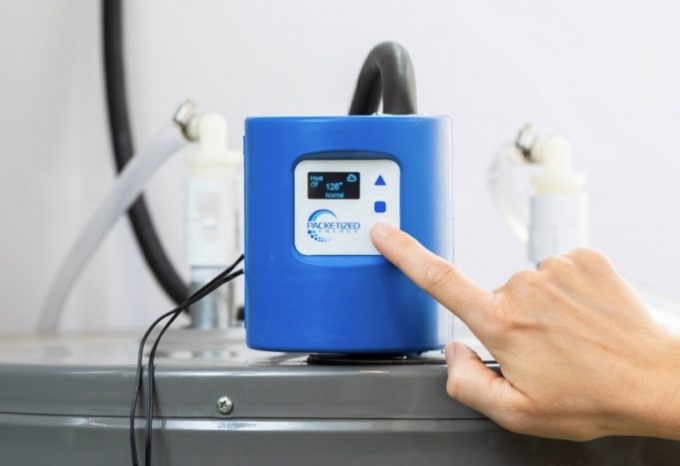What if we broadened the definition of a battery? What if, rather than electrochemical cells with anodes and cathodes, batteries were composed of thousands, or even millions, of internet-connected devices?
Packetized Energy creates “virtual” batteries by tapping into smart devices in peoples’ homes and businesses. The company’s software allows anything that stores energy in some form—think hot water heaters, electric vehicle chargers, and HVAC systems—to pull energy from the grid at an optimal time, then provide energy to the customer when it’s needed. Packetized Energy can even retrofit some non-smart devices with the necessary hardware to be part of the system.
“We’re building giant, distributed, internet-scale batteries made up of existing smart devices,” explains John Slinkman, director of software engineering at Packetized Energy. “If you can coordinate their consumption, coordinate how they’re charging and discharging, you can treat them as a giant virtual battery that is just as easily dispatchable as a typical grid-scale battery might be. It’s also much cheaper.”
Navigating grid peaks has significant environmental and economic benefits. Packetized Energy’s software allows smart devices to pull energy from the grid when cleaner energy sources are available—for example, stocking up on energy mid-day before solar power peters out. Storing energy also means that homes don’t have to rely on the grid at peak times, which is when the grid is most likely to source from its dirtiest backup power sources. Reducing demand for those backup power sources has the additional advantage of cutting costs for utilities and end-users.
This technology is crucial because the grid wasn’t built to incorporate renewable energy sources.
“The lack of grid flexibility is a huge problem right now,” Slinkman says. “Wind and solar, the fastest growing sources of energy, are only going to grow, but today’s grid is fundamentally not able to handle the variability in generation that these assets provide. That’s where Packetized steps in, because we’re providing the flexibility of timing when you’re charging all these distributed assets. That lets you forego infrastructure updates to improve the grid and lets you shut down dirty, coal-fired power plants.”
The 14-person company grew out of research from three engineering professors at the University of Vermont and was powered by the U.S. Department of Energy’s ARPA-E NODES program. Packetized Energy still works with ARPA-E, and has also done seven pilot projects. Packetized Energy’s customers are utilities, which typically give their end-users an incentive for opting to use Packetized Energy’s technology.
A major advantage Packetized Energy has over competitors is that its software requires a “minimal amount of data” from users, whereas other companies take significantly more, according to Slinkman.
Packetized Energy is focused on scaling, and is looking for partners to help the company achieve its goal of incorporating tens of thousands of devices in the next six to eight months. The startup joined Greentown Labs in January 2020, and was drawn to the incubator for its active community.
“We really wanted to work in a space that had so much green activity going on, in a community of people working hard to solve these really hard problems,” Slinkman says. “It’s not a typical coworking space—it’s something much more than that.”
Greentown Labs is a community of bold, passionate entrepreneurs creating solutions for today’s biggest climate and environmental challenges. Located in Somerville, Mass., Greentown Labs is the largest cleantech incubator in North America, operating a 100,000 sq. ft. campus comprised of prototyping and wet lab space, shared office space, a machine shop, electronics lab, and a curated suite of programs and resources. Greentown Labs is home to more than 100 startups and has supported more than 250 since its inception.

